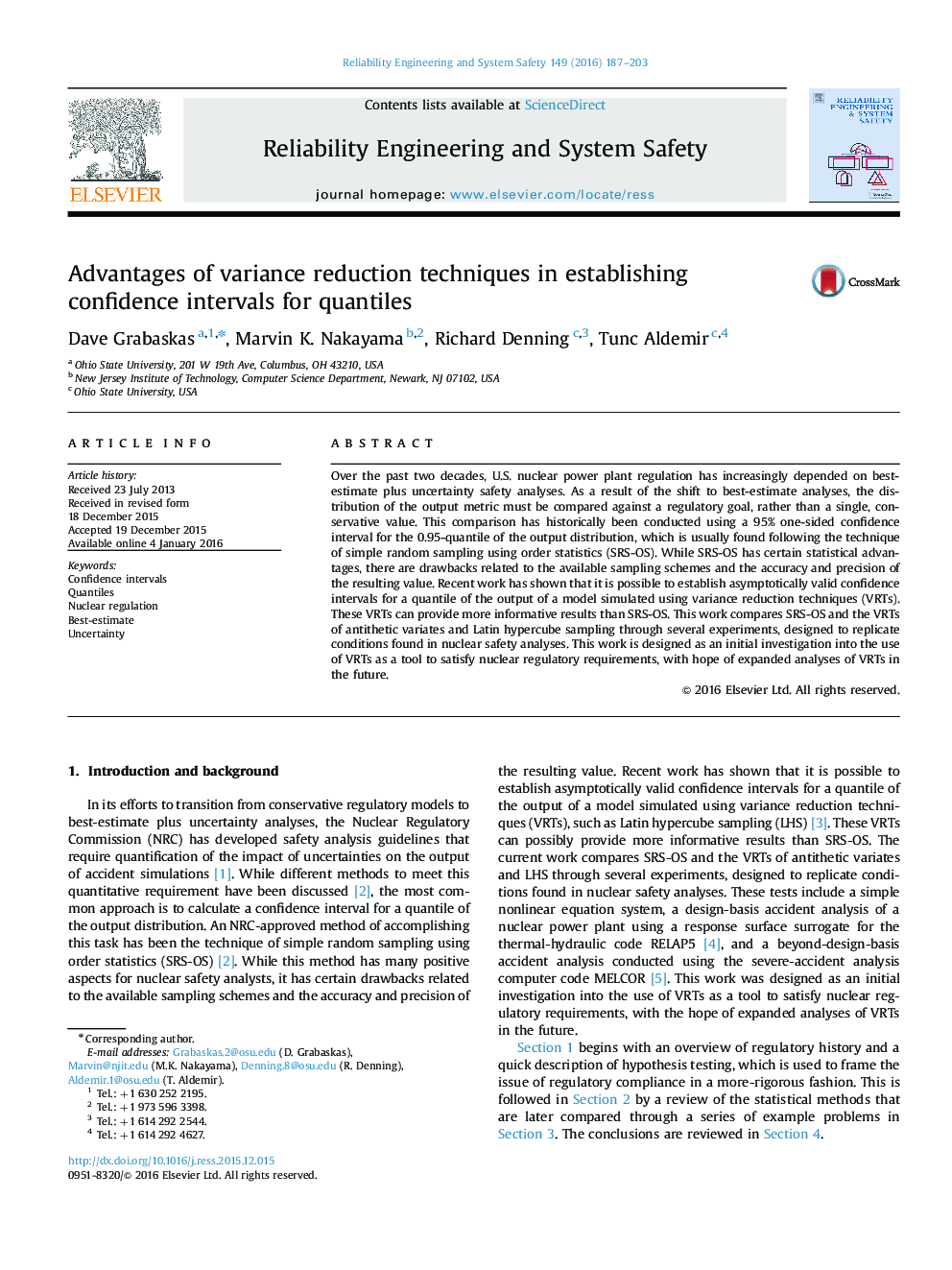| Article ID | Journal | Published Year | Pages | File Type |
|---|---|---|---|---|
| 807675 | Reliability Engineering & System Safety | 2016 | 17 Pages |
•The statistical techniques of SRS-OS, AV, and LHS are compared.•Three models are used to represent nuclear engineering safety analyses.•LHS appears to provide a more accurate and precise result than SRS-OS.•The improvement provided by LHS could result in less regulatory errors.•More research is needed for LHS to determine proper convergence of result.
Over the past two decades, U.S. nuclear power plant regulation has increasingly depended on best-estimate plus uncertainty safety analyses. As a result of the shift to best-estimate analyses, the distribution of the output metric must be compared against a regulatory goal, rather than a single, conservative value. This comparison has historically been conducted using a 95% one-sided confidence interval for the 0.95-quantile of the output distribution, which is usually found following the technique of simple random sampling using order statistics (SRS-OS). While SRS-OS has certain statistical advantages, there are drawbacks related to the available sampling schemes and the accuracy and precision of the resulting value. Recent work has shown that it is possible to establish asymptotically valid confidence intervals for a quantile of the output of a model simulated using variance reduction techniques (VRTs). These VRTs can provide more informative results than SRS-OS. This work compares SRS-OS and the VRTs of antithetic variates and Latin hypercube sampling through several experiments, designed to replicate conditions found in nuclear safety analyses. This work is designed as an initial investigation into the use of VRTs as a tool to satisfy nuclear regulatory requirements, with hope of expanded analyses of VRTs in the future.
